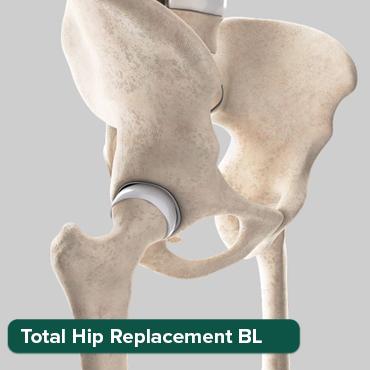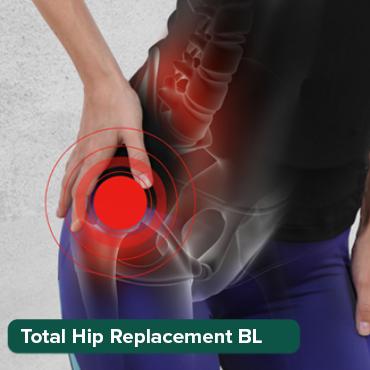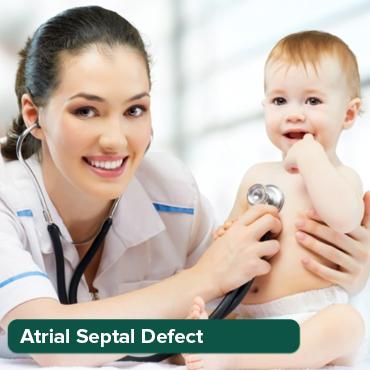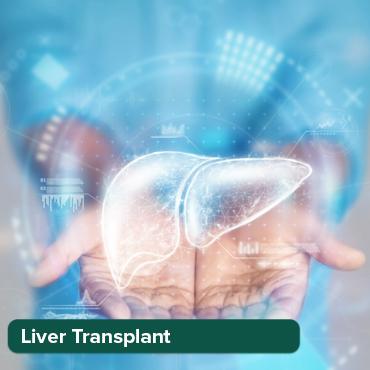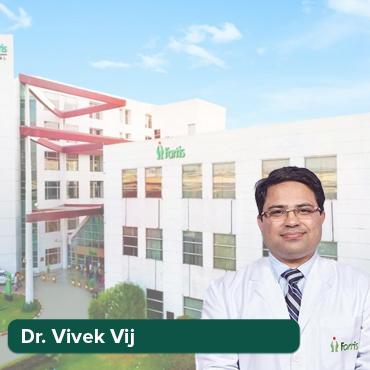
Understanding Kyphoscoliosis: Causes, symptoms, & treatment
14 Aug, 2023
 Healthtrip Team
Healthtrip TeamToday, we're focusing on kyphoscoliosis, a term you might have come across but aren't quite sure about. Don't worry; by the end of this, you'll have a clearer picture.
Most popular procedures in India
What is Kyphoscoliosis?
Kyphoscoliosis is a spinal deformity that combines two conditions: kyphosis and scoliosis. Imagine your spine. Ideally, it should be straight when you look at it from the front or back. However, with kyphoscoliosis, there's a twist (literally). The spine curves both sideways and outward. This can lead to a hunched appearance and can be quite painful for some.
Wellness Treatments
Give yourself the time to relax
Lowest Prices Guaranteed!

Lowest Prices Guaranteed!
Kyphosis vs. Scoliosis vs. Kyphoscoliosis: What's the Difference?
- Kyphosis: Ever seen someone with a pronounced hump on their upper back? That's a classic sign of kyphosis. This condition refers to the outward curvature of the spine, causing a rounded or hunched back. It's like the spine is bowing forward. While a slight curve is normal, excessive kyphosis can lead to issues.
- Scoliosis: Now, let's talk about that side-to-side curve. When the spine curves to the left or right in a C-shape or even an S-shape, that's scoliosis. It's like the spine decided to take a detour instead of going straight down. This can lead to uneven shoulders, a tilted pelvis, and other noticeable changes in posture.
- Kyphoscoliosis: Combine the two above, and you've got kyphoscoliosis. It's like a double whammy for the spine – curving both outward and sideways. It's more complex than having just one of the conditions and often requires a multifaceted approach to treatment.
In essence, while kyphosis and scoliosis are distinct conditions on their own, kyphoscoliosis is the presence of both simultaneously. It's like having both chocolate and vanilla swirl in your ice cream cone, except, in this case, it's not as sweet.
Kyphoscoliosis: Digging into the causes
Alright, let's get into the nitty-gritty of what causes kyphoscoliosis. Just like many conditions, there isn't a one-size-fits-all answer. Several factors can lead to this spinal deformity. Let's break them down:
1. Congenital Causes: When we say "congenital," we're talking about things that are present at birth. Some babies are born with vertebrae that aren't formed correctly or are fused together. This can set the stage for kyphoscoliosis. It's like building a tower with a couple of blocks out of place; it might lean or curve unexpectedly.
2. Neuromuscular Causes: This is where conditions like cerebral palsy or muscular dystrophy come into play. These disorders affect the muscles and nerves that support the spine. Imagine the spine as a tent pole and the muscles as the ropes holding it upright. If the ropes aren't pulling evenly or are weak, the pole might bend or lean. Similarly, when muscles can't support the spine properly due to a neuromuscular condition, kyphoscoliosis can develop.
3. Degenerative Causes: As we age, our bodies go through a lot. The spine is no exception. Over time, the discs between our vertebrae can wear out, and the vertebrae themselves can weaken. This wear and tear can lead to kyphoscoliosis. It's a bit like an old bookshelf that starts to sag under the weight of too many books.
4. Traumatic Causes: Accidents happen. Whether it's a car crash, a bad fall, or any other injury, trauma can damage the spine and lead to deformities like kyphoscoliosis. It's a sudden, often unexpected cause, unlike the gradual development seen in degenerative cases.
5. Idiopathic Causes: Sometimes, despite all our medical advancements, we come across cases where we just can't pinpoint the cause. That's what "idiopathic" means. It's a fancy way of saying, "We're not sure why, but it's happening." Especially in adolescents, kyphoscoliosis can develop without a clear reason.
So, there you have it! The causes of kyphoscoliosis are varied, and understanding them can help in its management and treatment. If you or someone you know is dealing with this condition, it's crucial to consult with a healthcare professional. They can provide insights tailored to the individual's situation.
Kyphoscoliosis: Recognizing the symptoms
If you're trying to understand the signs and symptoms of kyphoscoliosis, you're in the right place. This condition can manifest in various ways, and while some symptoms are quite visible, others might be more subtle. Let's dive in:
1. Physical Appearance:
- Hunched Back: One of the most noticeable signs is a pronounced curve in the upper back, making it appear hunched or rounded. It's like the spine is taking a bow.
- Uneven Shoulders: With kyphoscoliosis, one shoulder might sit higher than the other. It's as if they're playing a game of seesaw, and it's a clear sign that the spine is curving sideways.
- Tilted Pelvis: Just like the uneven shoulders, you might notice one hip is higher than the other or sticks out more.
- Prominent Ribcage: Especially in severe cases, the ribcage might stick out on one side, giving a rib hump appearance.
2. Pain and Discomfort:
While some people with kyphoscoliosis might not feel pain, others aren't so lucky. The discomfort can range from a dull ache to sharp pains, especially after standing or sitting for extended periods. It's like the spine is sending out an SOS, signaling that something's not right.
3. Respiratory Issues:
This is a big one. As the spine curves, it can compress the chest cavity, making it harder for the lungs to expand fully. This can lead to shortness of breath, especially during physical activities. It's as if you're trying to breathe with a tight belt around your chest.
4. Limited Mobility and Flexibility:
Imagine trying to bend a rod that's already bent in multiple directions. That's what it's like for someone with kyphoscoliosis trying to move. The spine's deformity can limit how far they can bend forward, backward, or side-to-side. Simple tasks like tying shoes or picking up something from the floor can become challenging.
In a nutshell, kyphoscoliosis can impact both the way someone looks and feels. If you or someone you know is experiencing these symptoms, it's essential to see a healthcare professional. They can offer guidance, provide a proper diagnosis, and suggest treatments to improve quality of life.
Kyphoscoliosis: The Road to Diagnosis
Hello again! If you're curious about how kyphoscoliosis is diagnosed, you're about to get a front-row seat to the process. Diagnosing this spinal condition is a mix of hands-on assessments and high-tech imaging. Let's break it down:
1. Physical Examination:
- Visual Assessment: The journey often starts with a simple look. A healthcare professional will observe the patient's posture, the curve of the spine, and any asymmetry in the shoulders, hips, or ribcage. It's like detective work, spotting the clues that hint at kyphoscoliosis.
- Range of Motion: The patient might be asked to bend forward, backward, and side-to-side. This helps assess the spine's flexibility and pinpoint areas of restriction.
- Palpation: By feeling the spine with their hands, the doctor can identify any prominent or misaligned vertebrae. It's a tactile way to gauge the spine's curve.
2. Radiological Tests:
- X-rays: This is the go-to imaging test for spinal conditions. It provides a clear picture of the bones, showing the degree and location of the curvature. Think of it as a snapshot of the spine's architecture.
- MRI (Magnetic Resonance Imaging): While X-rays are great for bones, MRIs shine when it comes to soft tissues. They can reveal issues with the spinal cord or nerves and help rule out other conditions.
- CT (Computed Tomography) Scans: These are like supercharged X-rays. They provide cross-sectional images of the spine, giving a more detailed view of its structure.
3. Pulmonary Function Tests:
- Why are they needed? Remember how kyphoscoliosis can compress the chest cavity? Well, when that happens, it can affect lung function. That's where these tests come in.
- Spirometry: This is the most common pulmonary test. The patient breathes into a device that measures the amount and speed of air they can inhale and exhale. It's a bit like blowing into a balloon, but with some fancy tech to capture the data.
- Lung Volume Measurement: This test gauges the total amount of air the lungs can hold. It's essential for understanding the impact of severe kyphoscoliosis on respiratory function.
So, there you have it! Diagnosing kyphoscoliosis is a comprehensive process, ensuring that every aspect of the condition is understood. If someone suspects they have this condition, these diagnostic steps are crucial in guiding the next steps in their healthcare journey.
Kyphoscoliosis: Navigating the Treatment Landscape
Hey there! If you're wondering about the treatment options for kyphoscoliosis, you're about to embark on a journey through both non-invasive methods and surgical interventions. Let's explore the various paths one can take to manage and treat this spinal condition:
1. Non-surgical Treatments:
- Physical Therapy:
- Think of it as a gym session, but tailored specifically for the spine. A physical therapist will guide patients through exercises to strengthen the back muscles, improve posture, and increase flexibility.
- Benefits: Over time, this can help alleviate pain, slow the progression of the curvature, and enhance overall mobility.
- Bracing:
- Braces are like armor for the spine. They're custom-made to fit the patient and are designed to halt or slow the progression of the curve, especially in growing adolescents.
- Benefits: While they might not correct an existing curve, they can be effective in preventing it from getting worse.
- Pain Management:
- This involves a combination of medications, therapies, and sometimes injections to alleviate the discomfort associated with kyphoscoliosis.
- Benefits: It enhances the quality of life by reducing pain and allowing patients to engage in daily activities more comfortably.
2. Surgical Treatments:
- Spinal Fusion:
- This is the most common surgery for kyphoscoliosis. Surgeons join two or more vertebrae together, so they heal into a single, solid bone. It's like welding the spine to set it straight.
- Benefits: It provides a long-term solution, especially for severe curves, and can significantly improve spinal alignment.
- Rod Placement:
- Metal rods are attached to the spine to provide support and correct the curve. These rods can be adjusted as the patient grows.
- Benefits: It offers a more flexible solution, especially for younger patients, allowing for growth while managing the curve.
3. Respiratory Treatments:
- As we've discussed, kyphoscoliosis can squeeze the chest cavity, affecting lung function.
- Breathing Exercises: Guided by respiratory therapists, these exercises aim to improve lung capacity and function.
- Oxygen Therapy: For those with severely compromised lung function, supplemental oxygen can be provided to ensure they get the necessary oxygen levels.
- Pulmonary Rehabilitation: A comprehensive program that combines exercise, education, and support to improve the respiratory health of patients with lung issues.
In conclusion, the treatment journey for kyphoscoliosis is multifaceted, with options tailored to the individual's needs and the severity of the condition. It's essential to consult with a healthcare professional to determine the best course of action. They'll be the guiding star, ensuring the path chosen offers the best possible outcome.
Kyphoscoliosis: Complications and how to manage them
Navigating the world of kyphoscoliosis can be challenging. Beyond the primary symptoms, there are potential complications that can arise if the condition is left unchecked. But fear not! With the right preventive measures and management strategies, these complications can be mitigated. Let's delve deeper:
- Progression of the Curve:
- Over time, the spinal curve can worsen, leading to increased deformity.
- Impact: This can exacerbate other symptoms, making daily activities even more challenging.
- Respiratory Failure in Severe Cases:
- What it means: As the spine curves, it can compress the chest cavity, limiting lung expansion.
- Impact: In extreme cases, this can lead to respiratory failure, where the lungs can't provide the body with the oxygen it needs.
- Chronic Pain:
- Continuous discomfort in the back or neck, often worsening with activity.
- Impact: This can affect mood, sleep, and overall quality of life.
- Mobility Issues:
- Difficulty moving, bending, or maintaining balance.
- Impact: This can limit independence and make daily tasks, like tying shoes or picking up objects, challenging.
Prevention and Management:
- Early Detection and Intervention:
- Catching kyphoscoliosis early can halt or slow its progression, leading to better outcomes.
- How to achieve it: Regular spinal check-ups, especially during growth spurts in adolescence, can help in early detection.
- Regular Check-ups for Those at Risk:
- Some individuals, due to genetics or other conditions, might be at a higher risk.
- How to achieve it: If there's a family history or other risk factors, more frequent spinal evaluations are recommended.
- Maintaining a Healthy Lifestyle:
- A healthy body can better support and protect the spine.
- How to achieve it:
- Exercise: Regular physical activity strengthens the back muscles and enhances flexibility.
- Proper Posture: Being mindful of posture, especially when sitting for extended periods, can reduce strain on the spine.
- Healthy Diet: Nutrient-rich foods can support bone health and overall well-being.
In conclusion, while kyphoscoliosis can bring about various complications, proactive measures and a focus on overall health can make a world of difference. Remember, the spine is the backbone of our body (pun intended!), and taking care of it is paramount.
Kyphoscoliosis: Wrapping It Up
Alright, as we come to the end of our deep dive into kyphoscoliosis, let's take a moment to reflect on what we've learned and why it matters.
1. The Importance of Understanding Kyphoscoliosis:
- Awareness is Key: Just like any other medical condition, being informed about kyphoscoliosis empowers individuals. Whether it's recognizing the symptoms in oneself or in loved ones, knowledge can be the first step towards seeking help.
- Beyond the Physical: Kyphoscoliosis isn't just about a curved spine. It can impact a person's self-esteem, their daily activities, and even their respiratory health. By understanding the condition, we can empathize and support those affected more effectively.
2. The Need for Early Diagnosis and Appropriate Treatment:
- Time is of the Essence: The earlier kyphoscoliosis is diagnosed, the better the potential outcomes. Early intervention can prevent the curve from worsening and can lead to more effective management strategies.
- Tailored Treatment: No two spines are the same, and neither are two cases of kyphoscoliosis. Understanding the condition allows for treatments to be customized to the individual, ensuring the best possible results.
- Quality of Life: With timely diagnosis and the right treatment, individuals with kyphoscoliosis can lead fulfilling lives, engage in activities they love, and manage any associated pain or discomfort.
In essence, kyphoscoliosis is more than just a medical term or a spinal curve. It's a condition that underscores the importance of awareness, timely intervention, and personalized care. By understanding it, we're better equipped to support those affected and advocate for their well-being. So, here's to knowledge, early action, and the journey towards better spinal health!
Related Blogs

The Importance of Physical Therapy in Orthopedic Recovery
Discover the role of physical therapy in achieving optimal orthopedic

The Importance of Physical Therapy in Orthopedic Recovery
Discover the role of physical therapy in achieving optimal orthopedic

Body Re-Alignment for Improved Balance and Coordination
Discover the benefits of body realignment for improved balance and

Body Re-Alignment for Improved Flexibility
Discover the benefits of body realignment for improved flexibility.

Body Re-Alignment for Improved Posture
Learn how body realignment can improve your posture and overall

The Art of Body Re-Alignment for a Pain-Free Life
Learn how body realignment can help you live a pain-free

